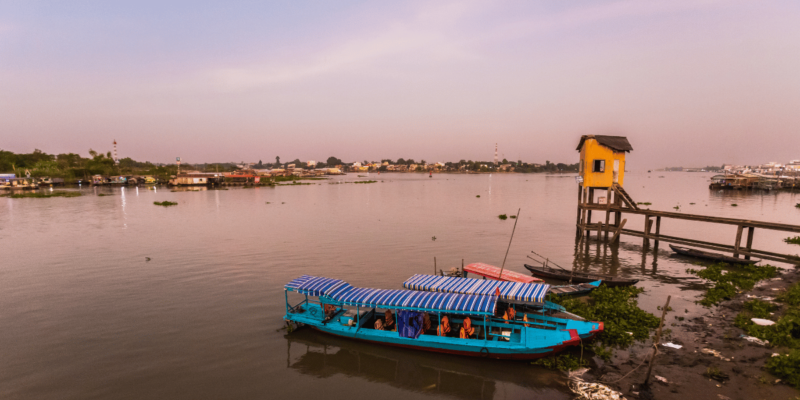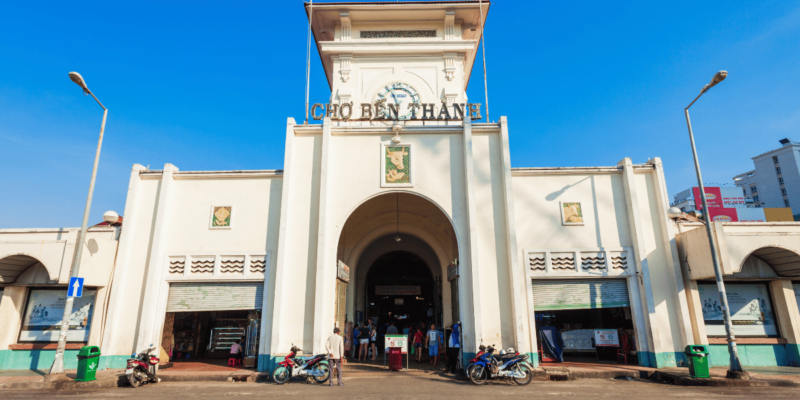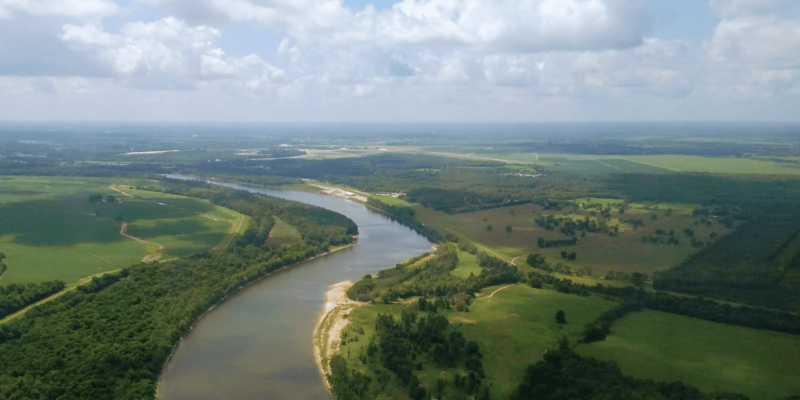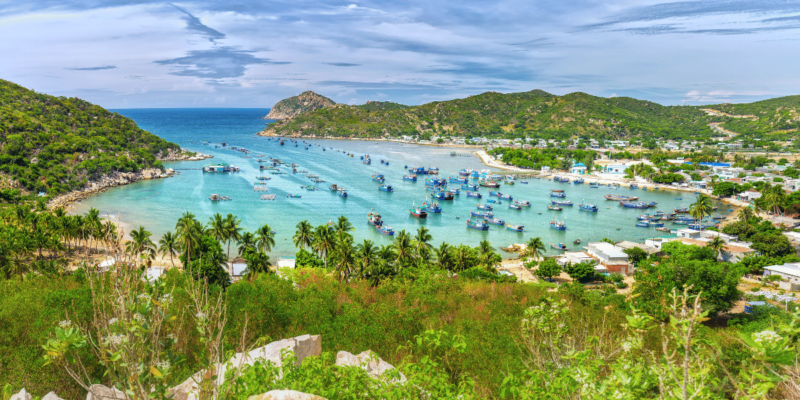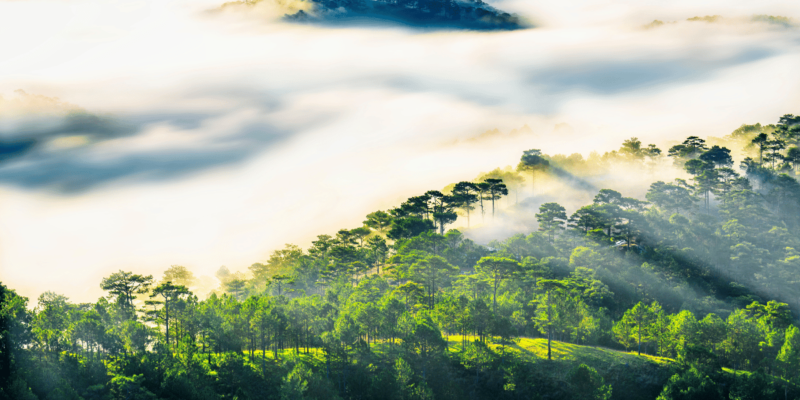Exploring Vietnam’s Mountains: A Journey Through Majestic Peaks and Rich Cultures
Vietnam – The Land of Majestic Mountains. Hidden within this enchanting Southeast Asian country are breathtaking mountain ranges that shape both the landscape and the culture. The rugged terrain of Vietnam, characterized by its towering peaks and lush valleys, plays a crucial role in defining the country’s natural beauty and cultural heritage.
Vietnam’s diverse geography includes a mix of highlands, dense forests, and extensive coastlines, with mountains being a prominent feature. From the northern regions of Sapa and Ha Giang to the central highlands and southern ranges, these mountains not only create stunning vistas but also influence the climate, agriculture, and lifestyle of the local communities. The mountain ranges, such as the Hoang Lien Son in the north and the Annamite Range running along the western border, are home to numerous ethnic minority groups, each with their distinct customs and traditions.

The mountains of Vietnam are more than just scenic wonders; they are the lifeblood of the country’s biodiversity and culture. They provide habitats for a rich variety of flora and fauna, many of which are endemic to the region. The terraced rice fields, often seen on postcards, are a testament to the ingenious agricultural practices of the hill tribes, who have adapted to the challenging terrain over centuries. These terraces not only support local livelihoods but also add to the picturesque quality of the Vietnamese landscape.
Moreover, the mountains hold a significant place in Vietnamese folklore and history. Legendary tales of heroes and mythical creatures often feature these majestic peaks, embedding them deeply into the national psyche. The historical paths through these mountains, such as the Ho Chi Minh Trail, played pivotal roles during the country’s struggles for independence, further solidifying their importance in Vietnam’s story.
In summary, Vietnam’s mountains are not just geographical features; they are integral to the nation’s identity. They shape the environment, influence the weather, support agriculture, and nurture cultural diversity. Exploring these highlands offers a unique opportunity to witness the harmonious relationship between nature and human ingenuity. Whether you are trekking through the misty hills of Sapa, exploring the cave systems in Phong Nha-Ke Bang, or simply enjoying the serene landscapes, the mountains of Vietnam promise an unforgettable adventure into the heart of this fascinating country.
Prominent Mountain Ranges in Vietnam
Northwest
The Hoang Lien Son Range is home to the majestic Fansipan, often referred to as the “Roof of Indochina” due to its status as the highest peak in the region. This range is a trekker’s paradise, offering breathtaking views and challenging trails. The region around the Hoang Lien Son mountains is renowned for its spectacular terraced rice fields, especially in places like Sapa, Y Ty, and Mu Cang Chai. These terraces not only provide stunning landscapes but also showcase the ingenious agricultural practices of the local hill tribes. The Northwest is also a cultural mosaic, inhabited by diverse ethnic groups such as the H’Mong, Dao, Tay, and Nung, each preserving unique traditions, clothing, and festivals that enrich the cultural tapestry of Vietnam.
Northeast
The Dong Van Karst Plateau in Ha Giang Province is a UNESCO Global Geopark known for its dramatic limestone landscapes and rugged beauty. This highland area is characterized by its unique rock formations and deep valleys, making it a geological wonder. The Non Nuoc Cao Bang Geopark is another highlight, featuring awe-inspiring caves, waterfalls, and ancient forests. Here, you can explore the magnificent Ban Gioc Waterfall and the Nguom Ngao Cave. The Northeast region is also home to several ethnic minority communities, including the H’Mong, Lo Lo, and Pu Peo, who maintain their distinct cultural practices and traditional lifestyles amidst the mountainous terrain.
Truong Son Range
The Truong Son Range, or Annamite Range, is the longest mountain range in Vietnam, extending from the North to the South. This range is notable for its biodiversity and historical significance. The Phong Nha-Ke Bang National Park, located in this range, is a UNESCO World Heritage site famous for its impressive cave systems, including the world’s largest cave, Son Doong. The park’s primeval forests are rich in biodiversity, home to many rare and endangered species of flora and fauna. The historical Ho Chi Minh Trail, which runs through the Truong Son Range, played a crucial role during the Vietnam War, adding to the range’s historical importance.
Central Highlands
The Central Highlands, known for its fertile red basalt soil, is Vietnam’s coffee and pepper heartland. This region’s lush highlands are dotted with beautiful waterfalls like Dray Nur and Dray Sap and serene lakes such as Lak Lake. The Central Highlands is also famous for its unique Gong culture, recognized by UNESCO as an Intangible Cultural Heritage. This musical tradition is an integral part of the local ethnic communities, including the Ede, Jarai, and Bahnar, who use gongs in various rituals and celebrations, creating a vibrant cultural atmosphere.
In conclusion, Vietnam’s mountain ranges offer a rich blend of natural beauty, cultural diversity, and historical significance. From the towering peaks and terraced fields of the Northwest to the geological marvels of the Northeast, the biodiverse forests of the Truong Son Range, and the culturally rich Central Highlands, these mountains are integral to Vietnam’s identity. Exploring these ranges not only reveals stunning landscapes and adventurous trails but also provides a deep insight into the traditional ways of life that have shaped Vietnam’s unique heritage.
Unmissable Experiences When Exploring Vietnam’s Mountains:
Mountain Climbing
One of the most thrilling adventures in Vietnam is climbing Mount Fansipan, the highest peak in Indochina, standing at 3,143 meters. Often called the “Roof of Indochina,” Fansipan offers a challenging trek through lush forests and rugged terrain, rewarding climbers with breathtaking panoramic views at the summit. In addition to Fansipan, the trekking routes in Sapa, Y Ty, and Mu Cang Chai are renowned for their stunning landscapes and terraced rice fields. These trails not only test your endurance but also provide a unique opportunity to immerse yourself in the natural beauty and tranquility of the Vietnamese highlands.
Cave Exploration
Vietnam boasts some of the world’s most spectacular cave systems. The Son Doong Cave in Phong Nha-Ke Bang National Park holds the title of the largest cave in the world. This colossal cave features its own river, jungle, and climate, offering an unparalleled adventure for spelunkers and nature enthusiasts. Phong Nha Cave and Paradise Cave are also part of this remarkable park, each offering unique formations and breathtaking underground landscapes. Exploring these caves provides a sense of awe and wonder at the natural world’s grandeur and intricacies.
Visiting Ethnic Villages
Exploring the mountain regions of Vietnam isn’t complete without visiting the ethnic minority villages. These communities, scattered across the highlands, offer a deep insight into Vietnam’s cultural diversity. Engaging with the H’Mong, Dao, Tay, and Nung people allows travelers to learn about their traditional customs, distinctive clothing, and unique ways of life. Visitors can participate in local activities, such as traditional farming practices, and enjoy homestays that provide a genuine cultural exchange.
Admiring Magnificent Natural Scenery
Vietnam’s mountainous regions are home to some of the most stunning natural scenery. The terraced rice fields of Sapa and Mu Cang Chai are iconic images of Vietnam, showcasing the ingenuity of hill tribe agriculture. The Dong Van Karst Plateau in Ha Giang presents a dramatic landscape of limestone peaks and deep valleys. Meanwhile, the Dray Nur and Dray Sap Waterfalls in the Central Highlands offer majestic cascades and lush surroundings. These locations provide perfect spots for photography, nature walks, and simply soaking in the awe-inspiring vistas.
Tasting Local Delicacies
No trip to Vietnam’s mountains is complete without sampling the local cuisine. The highlands offer a range of unique dishes that reflect the region’s cultural heritage and natural resources. Smoked buffalo meat (thịt trâu gác bếp) is a specialty among the ethnic minorities, offering a smoky and flavorful taste. Thang co, a traditional H’Mong dish made from horse meat, and com lam, sticky rice cooked in bamboo tubes, are must-try dishes. To complete your culinary experience, try ruou can, a traditional rice wine drunk through long bamboo straws, often enjoyed communally during festivals and gatherings.
In conclusion, Vietnam’s mountainous regions offer a wealth of unmissable experiences that cater to adventure seekers, culture enthusiasts, and nature lovers alike. From the thrill of climbing Mount Fansipan and exploring world-renowned caves to the cultural immersion in ethnic villages and the enjoyment of local delicacies, each experience adds to the richness of your journey. Embrace the diverse and vibrant highlands of Vietnam, and you will undoubtedly create lasting memories of this captivating land.
Travel Tips for Exploring Vietnam’s Mountains:
Best Time to Visit
The optimal time to explore Vietnam’s mountainous regions is during the dry season, from October to April. This period offers ideal weather conditions for mountain climbing, trekking, and cave exploration. The cooler, dry climate provides clear skies and pleasant temperatures, making it perfect for outdoor activities and scenic views. Avoiding the rainy season minimizes the risks associated with slippery trails and ensures safer and more enjoyable adventures.
Thorough Preparation
Proper preparation is crucial for a successful mountain trip. Ensure you have the right clothing for varying weather conditions, including warm layers for colder altitudes and moisture-wicking fabrics for hiking. Sturdy, comfortable hiking boots are essential for navigating rugged terrain. Pack personal items such as a hat, sunscreen, and insect repellent. Additionally, carry a basic first-aid kit and any necessary medications to handle minor injuries or health issues that may arise during your trek.
Hire Local Guides
Hiring local guides can significantly enhance your experience. They provide not only safety and navigation assistance but also valuable insights into the local culture and natural environment. Local guides can lead you through the best trails, offer historical and cultural context, and help you engage with the communities you encounter. Their expertise ensures a richer, more informed exploration of Vietnam’s mountainous regions.
Environmental Protection
Respecting and protecting the natural environment is paramount when exploring Vietnam’s mountains. Ensure you leave no trace by carrying all your trash with you and disposing of it properly. Avoid picking plants, disturbing wildlife, or causing any harm to the natural habitat. Stick to designated trails to minimize your impact on the environment. By practicing responsible tourism, you help preserve the beauty and integrity of these pristine areas for future generations.
In conclusion, exploring the mountains of Vietnam can be an unforgettable experience if done thoughtfully and responsibly. Choosing the right season, preparing adequately, hiring knowledgeable local guides, and respecting the environment are all crucial steps to ensure a safe and enriching adventure. Embrace these travel tips to fully enjoy the breathtaking landscapes and rich cultural tapestry of Vietnam’s highlands while contributing to their preservation.
Conclusion
Vietnam’s mountains are a treasure trove of natural beauty and cultural diversity, offering unparalleled experiences for adventurers and culture enthusiasts alike. From the towering peaks of the Hoang Lien Son Range, home to the majestic Fansipan, to the geological wonders of the Dong Van Karst Plateau and the lush biodiversity of the Truong Son Range, each mountain region presents its own unique charm. The terraced rice fields of Sapa and Mu Cang Chai, the ancient caves of Phong Nha-Ke Bang, and the vibrant ethnic cultures in the highlands all contribute to the rich tapestry that defines Vietnam’s mountainous landscapes.
These regions are not just scenic wonders but also cultural heartlands where traditional lifestyles and ancient customs continue to thrive. Exploring these areas provides a deep understanding of Vietnam’s history, culture, and natural heritage. The thrilling activities such as trekking, mountain climbing, and cave exploration, combined with the opportunity to engage with local communities and savor regional delicacies, make for a truly immersive travel experience.
We encourage readers to start planning their journey to these remarkable mountainous regions of Vietnam. Whether you are a seasoned adventurer or a curious traveler, Vietnam’s mountains promise a wealth of unforgettable experiences. Embark on a journey to discover the breathtaking landscapes, diverse cultures, and the timeless beauty that awaits in the highlands of Vietnam.


